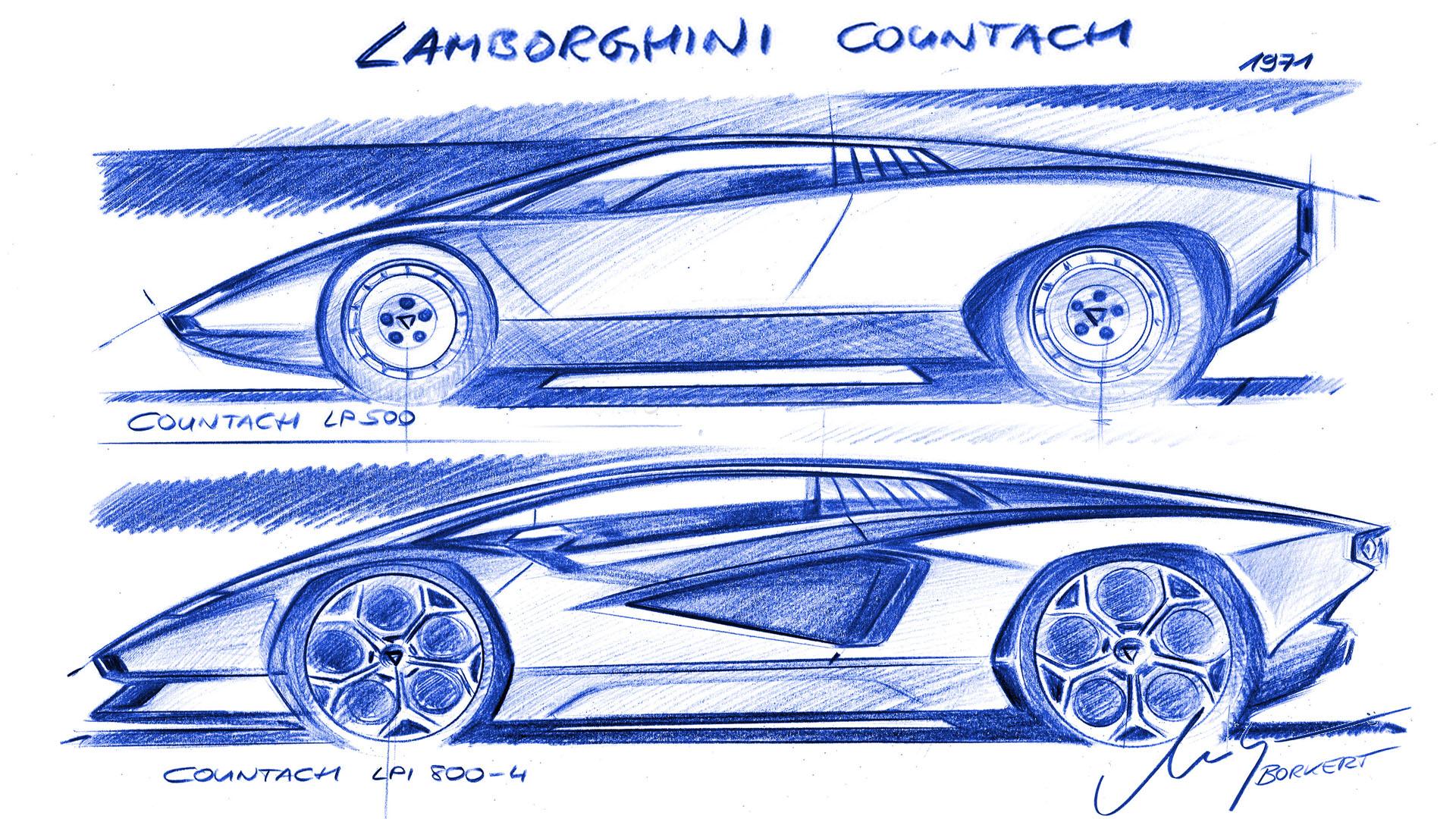The Lamborghini Countach was unveiled at the 1971 Geneva Motor Show, together with the amazing Miura SV, the latter has become a seven-figure work of automotive art today, the production version of the Countach, the LP400 is catching up quickly, but the original Countach LP500 as it was called after the internal codename LP112 was dropped, was a one-off, and history tells us the car was lost after running into the Mira barrier as part of the crash tests for homologation.
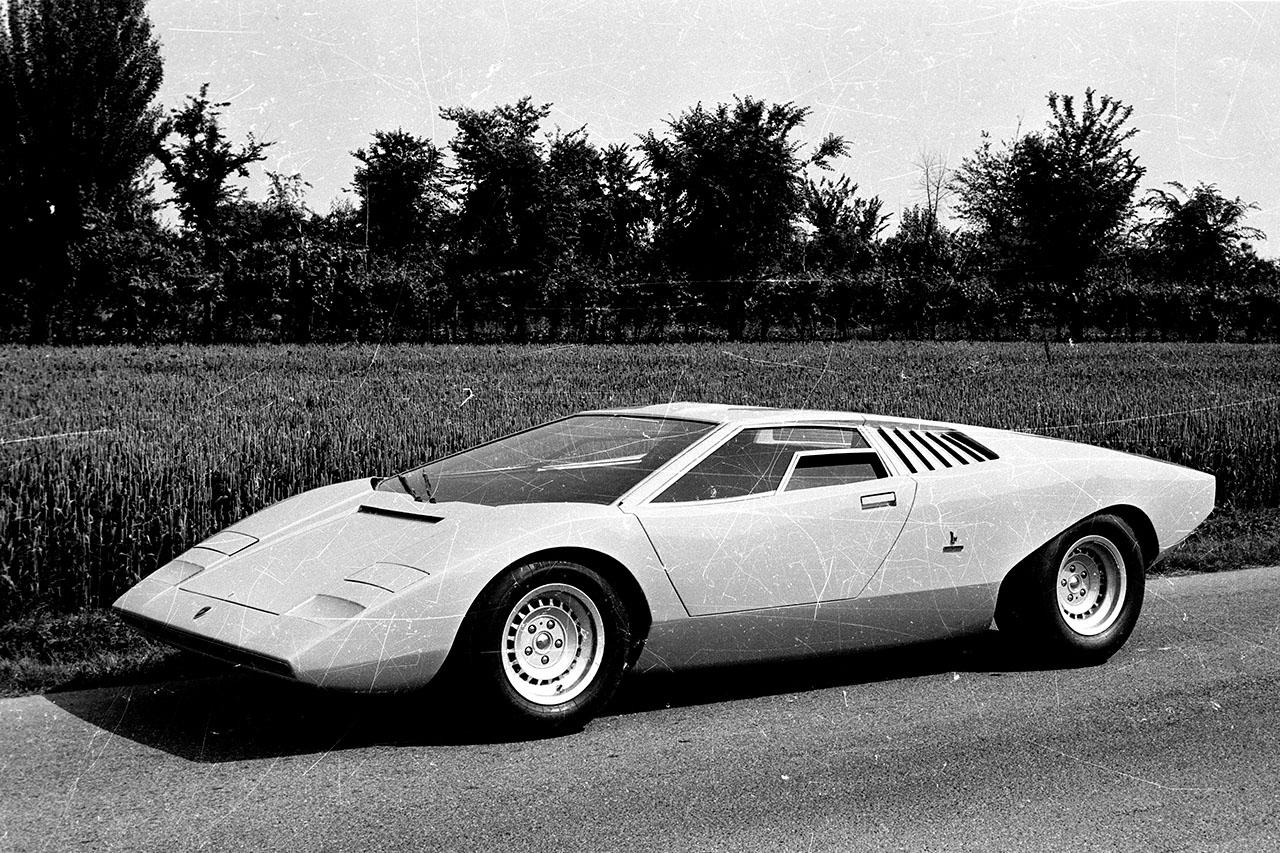
In the end, less than 2,000 units were made between 1974 and 1990, one of the longest production runs for a single model ever, but it was the Countach that left a mark in the life of an entire generation, and the generation after that, the Miura is a legend, but the Countach is a star, especially in the Eighties when wide wheel arches, deeply concaved wheels, and that famous rear wing made their intro … countless bedroom walls were adorned with a Lamborghini Countach, sometimes combined with scarcely dressed women, this truly was the beauty and the beast.
Flashback to 1971 …
The 1971 Lamborghini Countach concept car, or the LP500, was unique, and very different from the LP400 production car that was available from 1974 on, the general design was still there, as where those famous upward-opening doors, but along the way of development almost everything else was changed to make the Countach ready for production.
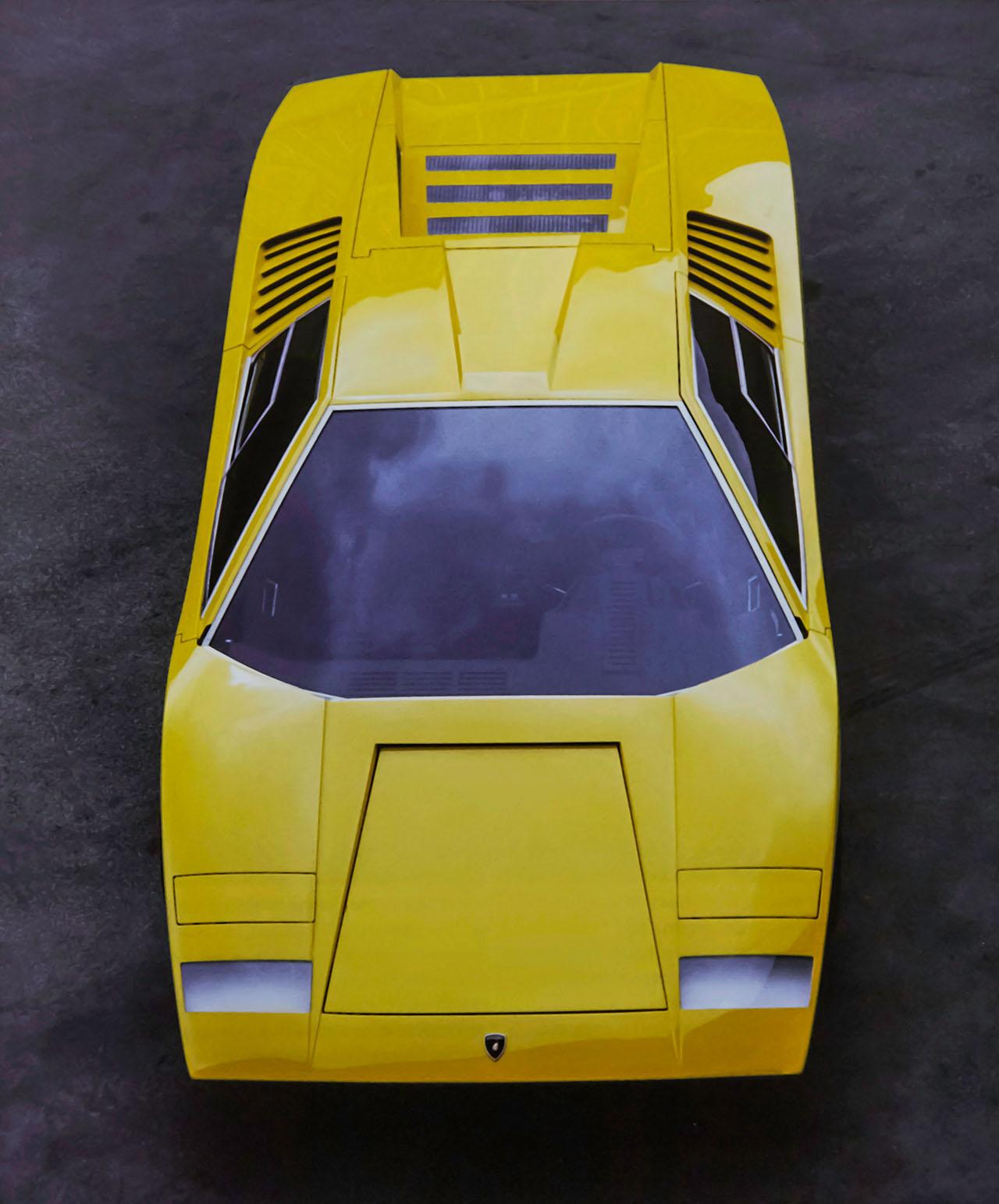
The prototype came with an experimental 5-Liter V12 engine that proved too difficult to make reliable at the time, so they switched to a modified 4-Liter Espada engine instead, a well-tested and relatively reliable V12 at that time, but it needed more cooling than that sensual aluminum body to deliver, so we got the famous NACA ducts in the doors and those box-style air intakes behind the side windows, talking about side windows, on the Countach these were almost flat, but not quite, and that made using that small section in the lower corner difficult to install, the production model would get a three-part side window treatment that blocked outward visibility if you happened to be the wrong height.

On the inside things changed considerably too during the three-year development run, the prototype had a single-spoke steering wheel in front of a very futuristic looking dashboard, to the left was an attempt at a ‘computer check’ installed that showed a diagram of the Countach seen from the top with lights that would come on in case of a problem, but deep inside the binnacle was still an analog speedometer, with the configuration of the gearbox being in front of the engine, between the two seats, the gearshift lever poked up for the driver to operate, one thing that did remain initially was the ‘periscope’, the Countach LP500 and later the LP400 production models had a rearview mirror fitted at the top of the windshield, but it didn’t show a view through the tiny rear window, instead it ‘peeked’ through a tunnel embossed in the roof … for better visibility.
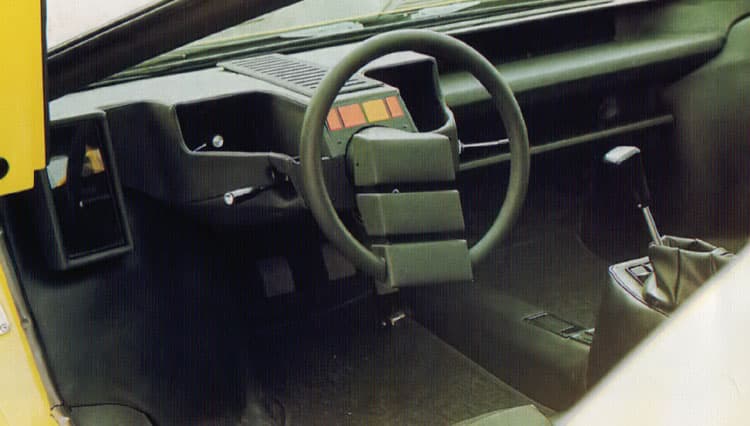
If you happen to see an original Lamborghini Countach LP400 today, don’t be disappointed by her size, compared to current cars, the Countach was small with an overall length of just 4010 mm (157.59 in) and a wheelbase of 2450 mm (96.29 in) while the roof was only 1070 mm (42.05 in) high, still the 440 hp 5-Liter engine from the Countach prototype would be able to reach a top speed of 300 km/h (186 mph) … in 1971! When the Countach went into production in 1974, despite the engine going from a bore and stroke of 85×73 mm to 82 x 62 mm and a drop in horsepower to ‘only’ 375 hp, the listed top speed was 316 km/h.
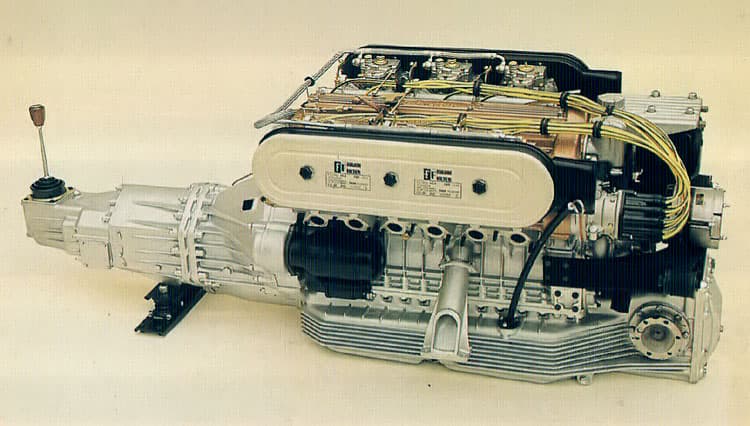
The biggest change from the Lamborghini Countach LP500 from 1971 to the Countach LP400 production version in 1974 was both the chassis and the bodywork, the original prototype was built by Marchesi on a steel floor-plate with a cradle in square-section steel while the entire body was made from steel panels, reports show the prototype put 1130 kg (2492 lbs) on the scales. By 1974, when the Countach LP400 was introduced, Lamborghini switched to a 40 mm round steel tubular spaceframe built by Marchesi hiding underneath an all-aluminum body … saving a lot of weight to end up at 1065 kg (2348 lbs), which partly explains the higher top speed of the production car.
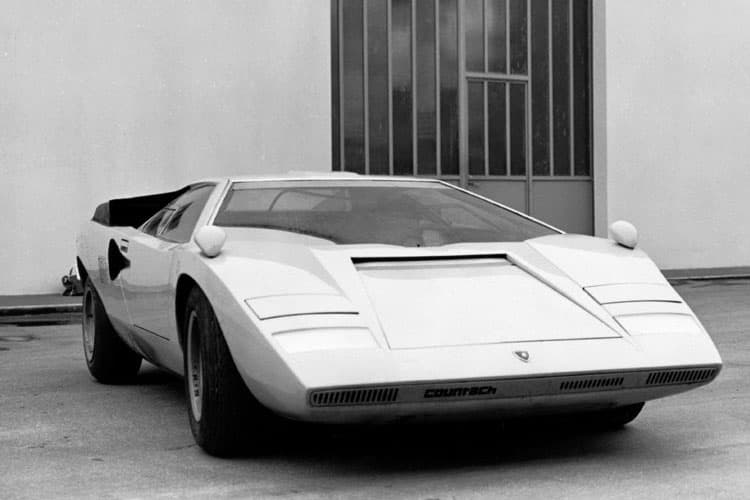
By 1978, when the Countach LP400 S was introduced with her large wheel arch extensions, wild rear wing, and massive rear wheels, Automobili Lamborghini SpA managed to sell 157 units of the ‘narrow body’ Countach LP400, just keep in mind not all of those still remain, and several were converted by their owner into S-specs after they saw the wild LP400 S … ironically some of those have later been converted back into their original narrow configuration as the LP400 has become the most valuable model in the series, which went from LP400 to LP400S in 1978, then to LP500S in 1982, after that, the Quattrovalvole came around by 1985 to be succeeded by the 25th Anniversary edition in 1988.
Back to the Present Day …
Fast forward to 2021, five decades after the Countach LP500 was unleashed into the automotive world, and while Automobili Lamborghini SpA has always been proud of the fact they focus on the future, sometimes you just have to look back into your own history and celebrate a milestone that proved to be extremely important for the company, the Miura might be universally considered as the first supercar in the world, but I don’t think anyone can argue with the fact that the Countach changed the automotive world forever, so it seemed like a great idea at one of their marketing meetings to pay homage to the Countach, 50 years later.
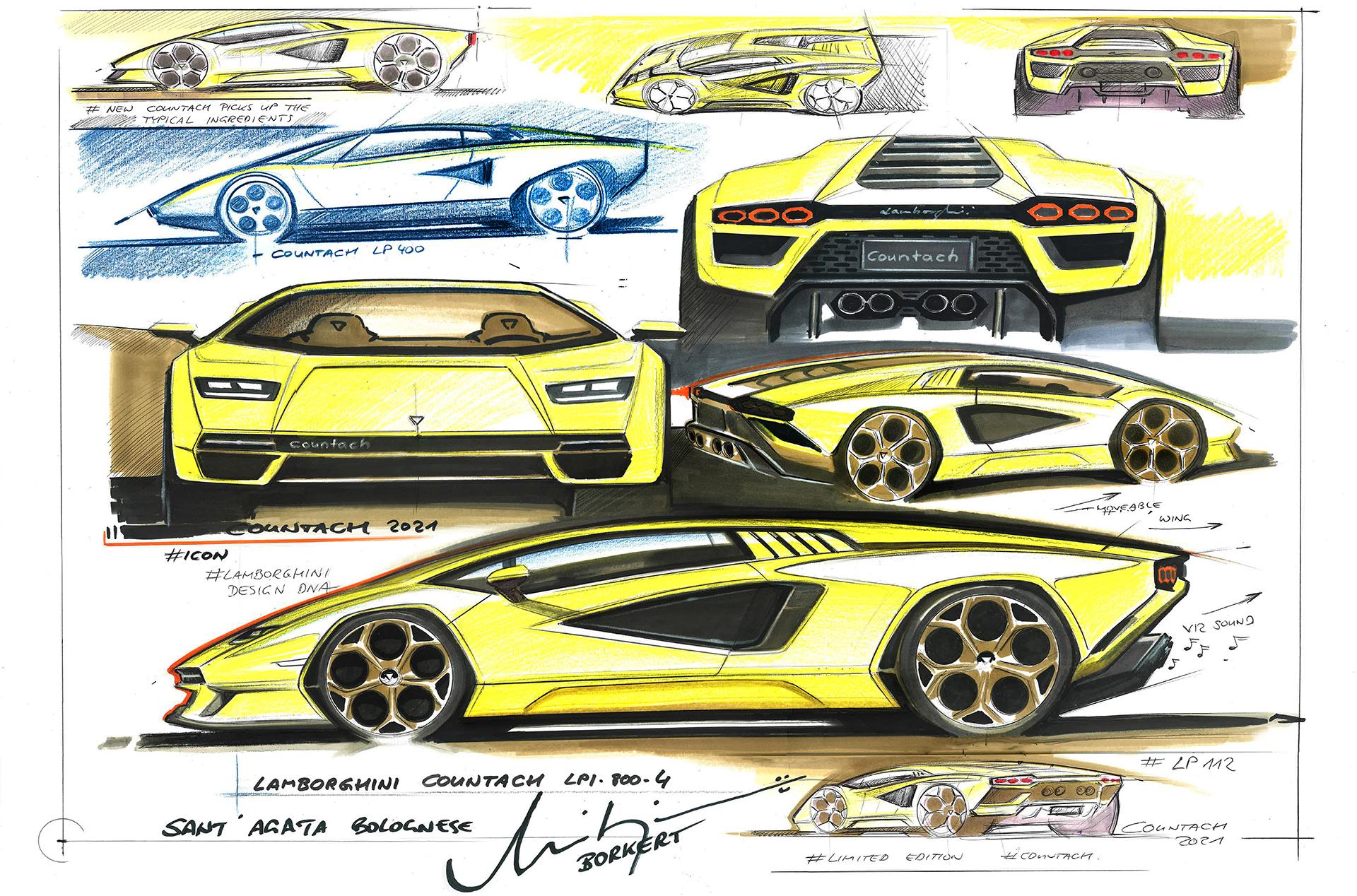
So the concept of a Lamborghini Countach homage came to fruition, a limited edition supercar made specifically to celebrate the 50th Anniversary of one of the most important Lamborghini cars ever made, the car that introduced upward-opening doors into production, often imitated after that on lesser cars, but Lamborghini holds first place forever, even 50 years later this is still a trademark for the V12 flagship models from Sant’Agata, and while inspired by the Carabo, it was the Countach to put them on a car sold to the public, but let’s get back to the Ommagio now.
The Contemporary Countach
Over the last 50 years a lot has changed in the automotive world, the Countach might have suffered from an oil crisis in her days, but by 2021 those pop-up headlights became a big no-no for safety reasons, so the new car just couldn’t implement those anymore, and that was just the first hurdle to take, the 2021 Countach Ommagio had to be street-legal worldwide, and there was only one way to achieve that on a reasonable budget … use the current Aventador as a base, as long as you keep the chassis and basic measurements, you can install different body panels all you like, it will still be legal and won’t have to endure a new crash test … and to be honest, that really restricted things for the designers in Sant’Agata.

So now we are stuck with a chassis that comes with a wheelbase of 2, 700 mm (106.11 in) compared to the 2,450 mm (96.29 in) on the 1971 prototype, but more importantly the 2021 edition comes with a length of 4,870 mm (191.73 in) against the 4010 mm (157.59 in) of the LP500, that’s 860mm longer due to much larger overhangs both to the front and to the rear, so the overall balance of the side profile can’t be compared between the two because of the Aventador base constraints … and things get even worse from a front or rearview, the 2021 car has massive width of 2,265 mm (89.17 in) with the mirrors compared to the slim width of 1,870 mm (73.49 in) of the prototype that came with small ‘ball’ mirrors on top of the front fenders.
So let’s get this ‘elephant in the room’ out of the way right from the start, there is no way the design studio at Lamborghini would be able to use the Aventador chassis and rolling components and create a lookalike of the 1971 Countach LP500, not even a ‘resto-mod’ version, it just wasn’t possible within the limits they had to work with, so the 2021 Countach homage edition would take inspiration from the original, 50-year-old prototype and convert that design into the 21st-century evolution we saw being unveiled at the 2021 Monterey Car Week.
The Official Unveil During Monterey Car Week

I am sure most of you have read the comments on social media that were posted after the unveiling, or even after seeing the teasers Lamborghini published in the week and days before the official press release became available … not all of them were positive, to say the least, some were really hitting hard on Lamborghini for bringing back the legendary Countach name on a car that is so different from that earthshattering 1971 prototype, for many purists, Lamborghini just committed a capital crime by calling this 2021 limited edition the Countach LPI 800-4.
So what is really going on with the new 2021 Lamborghini Countach LPI 800-4? There will be only 112 units made in total, as an homage to the LP112 internal codename of the Seventies supercar, and while the new car received a lot of mixed comments, that didn’t keep 112 wealthy individuals to put their name on the order list … the new Countach was completely sold out before she was even shown to the public, so she isn’t that bad … or is she.
Countach vs Countach, 50 years apart
Let’s take a look at the basics first, based on the Aventador Ultimae chassis, drivetrain, and engine, the Countach LPI 800-4 comes with 780 hp from the NA V12 engine, but Lamborghini installed the supercapacitor and electric engine from the Sián onto the new Countach too, adding 34 more horsepower into the mix for a total of 814 … but LP814 doesn’t flow off the tongue easily, so they went with LP800, and because it’s a hybrid now they added the ‘I’ for Ibrido to the LP designation for LPI 800 and the -4 comes in as this car is all-wheel drive as all V12 models today.

Wheels are massive 20 and 21-inch units compared to the original that had to make do with only 14 inch, 7 inch wide at the front and a measly 9 inch for the rear with narrow Pirelli tires that weren’t up to the task, on the contrary, the new Countach rolls down the street on 9 inch wide front wheels and monstrous 13 inch wide rear wheels, shod with 255/30 ZR20 and 355/25 ZR21 respectively, still made by Pirelli but now the new P Zero Corsa rubber, as we already mentioned, things have changed considerably over the last 50 years.
So comparing the specifications between 1971 and 2021 is useless, every car makes has evolved, and you can’t really compare both cars in that area anymore, not from Lamborghini, nor from any other supercar builder, but how about design then, if you would design an homage car does it have to be a modern version of the original, retaining the exact same look but brought into the future and within the current laws and regulations … or would you opt to create a new car that shows a resemblance to the original, but is still different, more up to date?
The View From Outside …
This is where opinions vary, some were expecting an exact replica of the original car, others wanted a new car, but one that still looked very close to the original, while the Lamborghini designers took a different route … creating a new car that was inspired by the legendary classic from 1971, but has little to no elements taken directly from the 1971 prototype Countach, while they still revived the name some 31 years after the last Countach was built (in 1990, the silver 25th Anniversary on display at the factory museum).
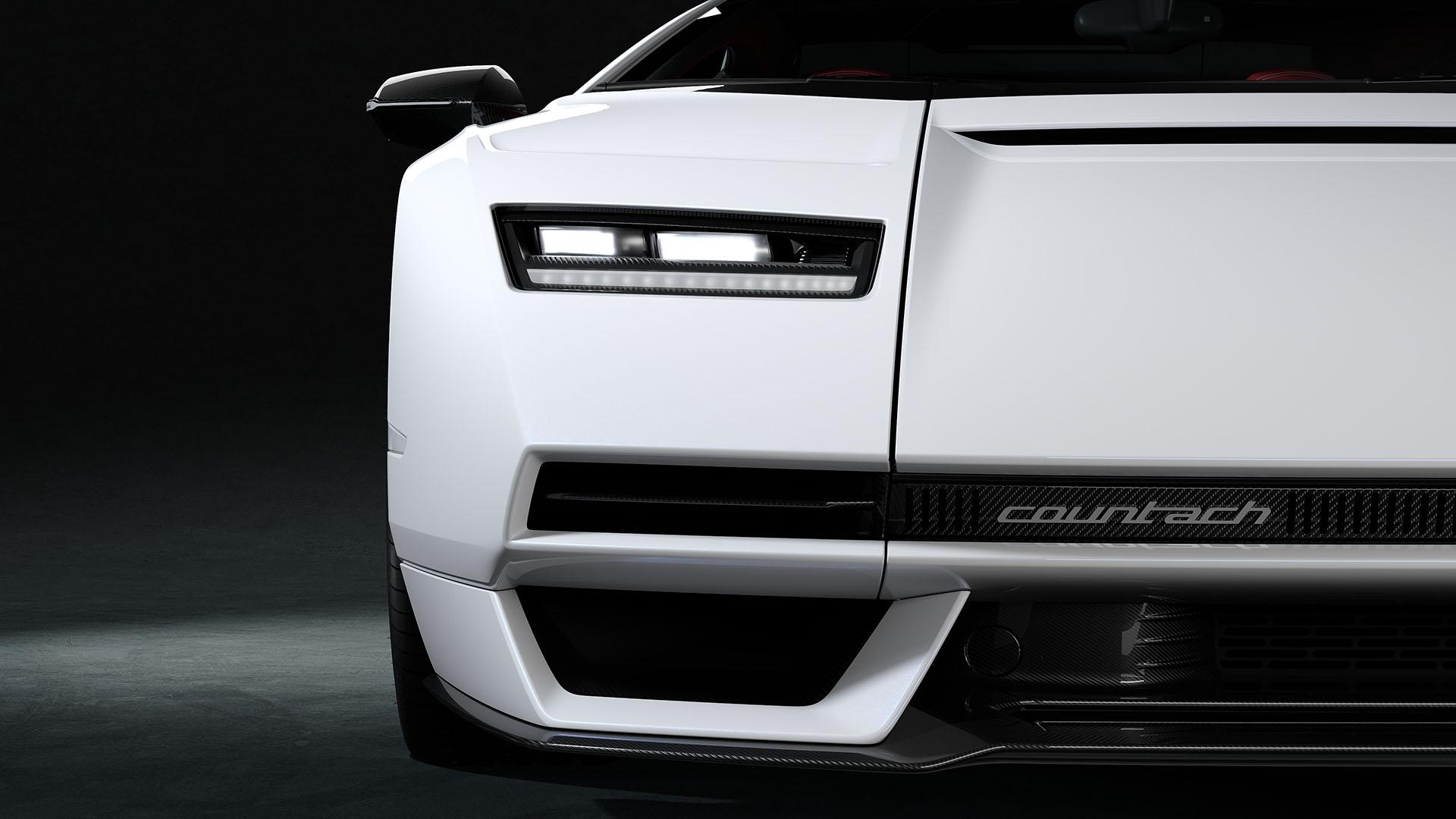
But let’s take a more in-depth look at the design of this 2021 Countach, starting from the front, the LPI 800-4 had to comply with current regulations, and that just about puts pop-up headlights into an illegal feature, so those typical Countach dual round ‘pods’ that open when in use just couldn’t be resurrected, instead Lamborghini opted for modern LED light units on the fenders in a somewhat similar location … a little bit too high up, but that also might be due to legislation, so I’m not going to complain about their position, on the other hand, the design of the front hood does remind us of the original Countach, as does the script in the air intake, so there are a few links to the design from the Seventies to be found from this angle.

So the front would be somewhat acceptable as a modern interpretation of the 1971 Countach, personally, I think Lamborghini could have done some sliding cover over the exposed headlights, imagine a color-coded shell over these that slides up when the headlights have to be used, that would make the front look even more like the original, while it would be completely legal without pop-up pods with their intricate motors and additional weight, just my 2ct.
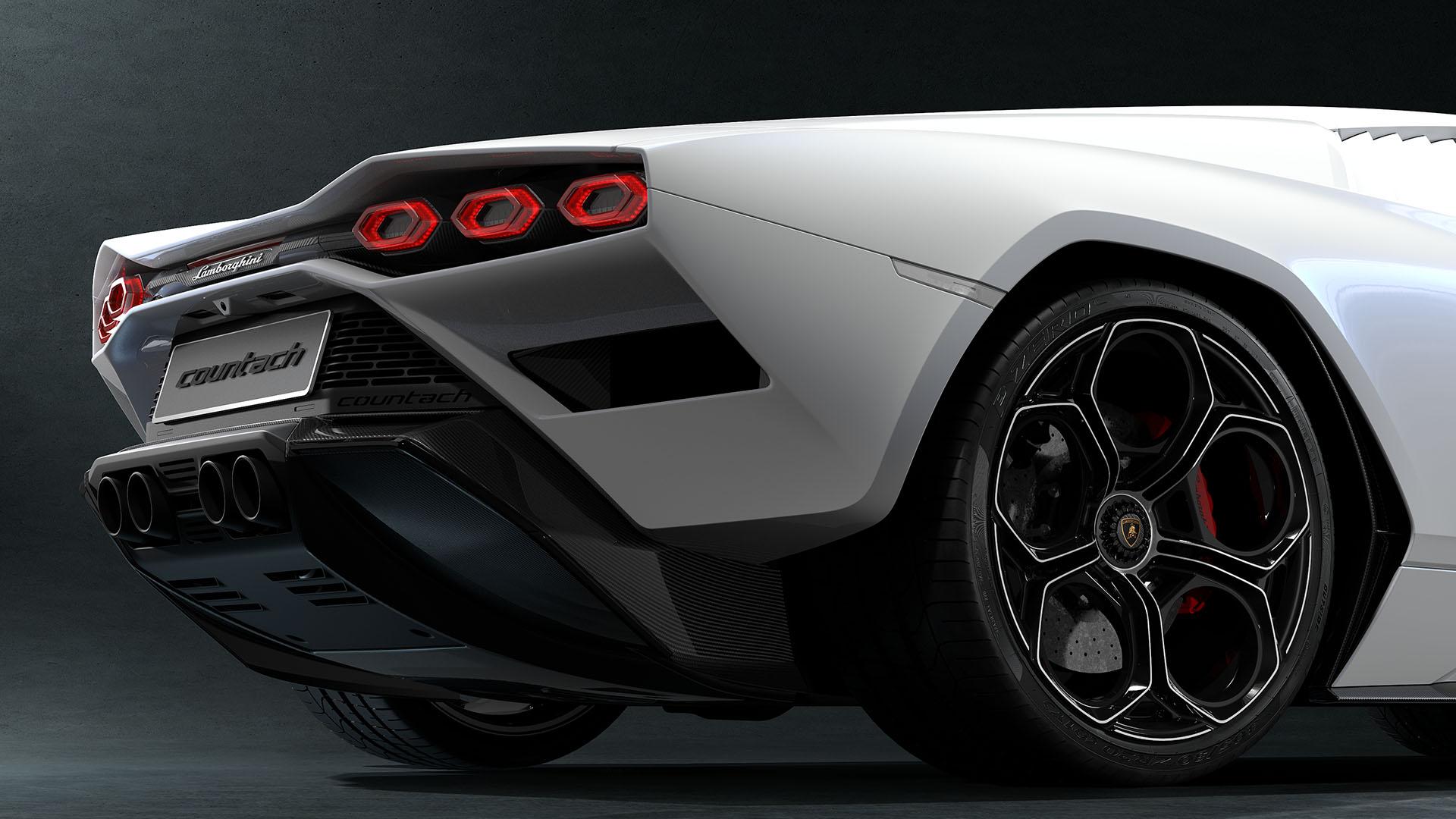
For me the bigger compromises had to be made at the rear of the new 2021 Countach because we have a massive 6.5-Liter V12 between the rear wheels, it needs cooling, which means cool air to go into the engine bay, and hot air to exit the ‘oven’ which implied cutting large air vents on the upward flowing body section behind the wide rear tires, they do interrupt the clean lines in that area of the original Countach.
But the compromises didn’t stop there, while the overall design of the taillight pods does look like the very recognizable trapezoidal units found on the Countach prototype, apparently, it was too difficult for Lamborghini to actually mimic the unique design of the prototype’s taillights and instead just used the Sián taillights … shouldn’t a car that commemorates the legendary Countach, that meant so much for Lamborghini during her 15 years of production, be eligible for some bespoke taillights … perhaps it was a problem to make them legal, I don’t know, but it would have been so much better looking, now the Countach LPI 800-4 is almost nothing more than a redressed Sián, and I’m sure that was not the intention.

Now we come to the most complained about controversy found on the new 2021 Countach … the side profile with that massive, clear carbon fiber air intake … which you have to admit is a necessity on this modern interpretation, that massive V12 needs cool air and having a large intake cut into the door and the rear fender is the only way … or is it? Think about this one for a second: didn’t the Sián have those heat-sensitive flaps at the rear that opened up without using any motors? Yes, it did, wouldn’t something like that be possible to use on the side of this new Countach … how about a set of louvers that were flush with the bodywork when standing still, but open up like fins when driving and supplying air into the engine bay, that would make the side profile of this 2021 edition look as smooth as the 1971 prototype, but still be functional as an air intake when required, we’ve seen something like that being used on the Countach Restyling Prototype back in the Eighties.
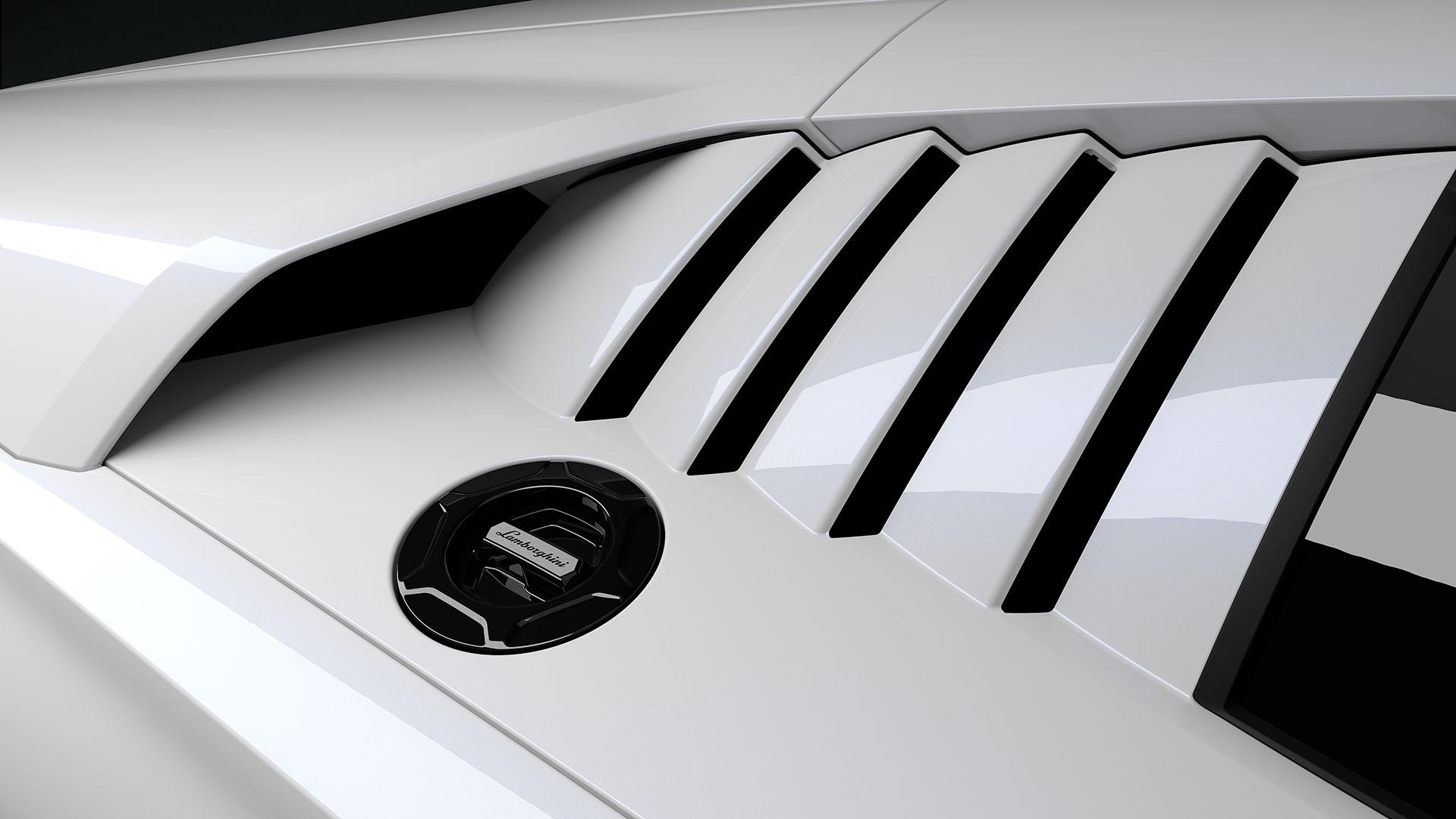
I know many complaints about the new 2021 Countach were about that typical NACA duct on the side of the older Countach, but this limited edition LPI 800-4 is meant to celebrate the 50th Anniversary of the Lamborghini Countach, and that’s the 1971 prototype, which didn’t have a NACA duct on the side when presented to the public, so why would an homage need it then … if you look closely at the side you will notice the fins behind the side window, that design element was taken directly from the 1971 prototype, and I for one love it, and while some want to see it in black so it visually extends and lowers the car, they were yellow on the original car, so keep them color-coded to the body on this homage too.

While we’re still looking at the 2021 Countach from the side, let’s discuss those wheels, according to the official press release these are inspired by the famous ‘telephone dial’ units found on the classic Lamborghini Countach, and I love those deeply concaved 15-inch wheels, in fact, I prefer them over the later 25th Anniversary units, but that’s not the point I want to make here … Lamborghini is celebrating the 1971 Countach, the prototype that came with those tiny 14-inch wheels, so why use wheels inspired by a Countach model that didn’t arrive until 1978, that doesn’t make sense to me, they should have made a modern version of those small 14-inch flat units with the rectangular openings, not suddenly jump ahead 7 years into the evolution of the Countach for inspiration on the wheels.
When you take a look from the top you will notice some really interesting design clues from the classic Countach on this 2021 edition, the design of the ‘periscope’ from the original car for instance, and while it isn’t a functional rearview mirror tunnel anymore, the design is there with the glass panel, while the vents on the engine cover are somewhat taken into present-day with those glass louvers, which honestly remind me of those on the Murciélago Super Veloce, what I absolutely love on the new car are those small vents next to the glass louvers on the engine cover, just behind the roof, those were used on the Miura, and on the Countach production version too, so I love that small detail they incorporated into this Countach homage, I doubt they were necessary, but they look the part.
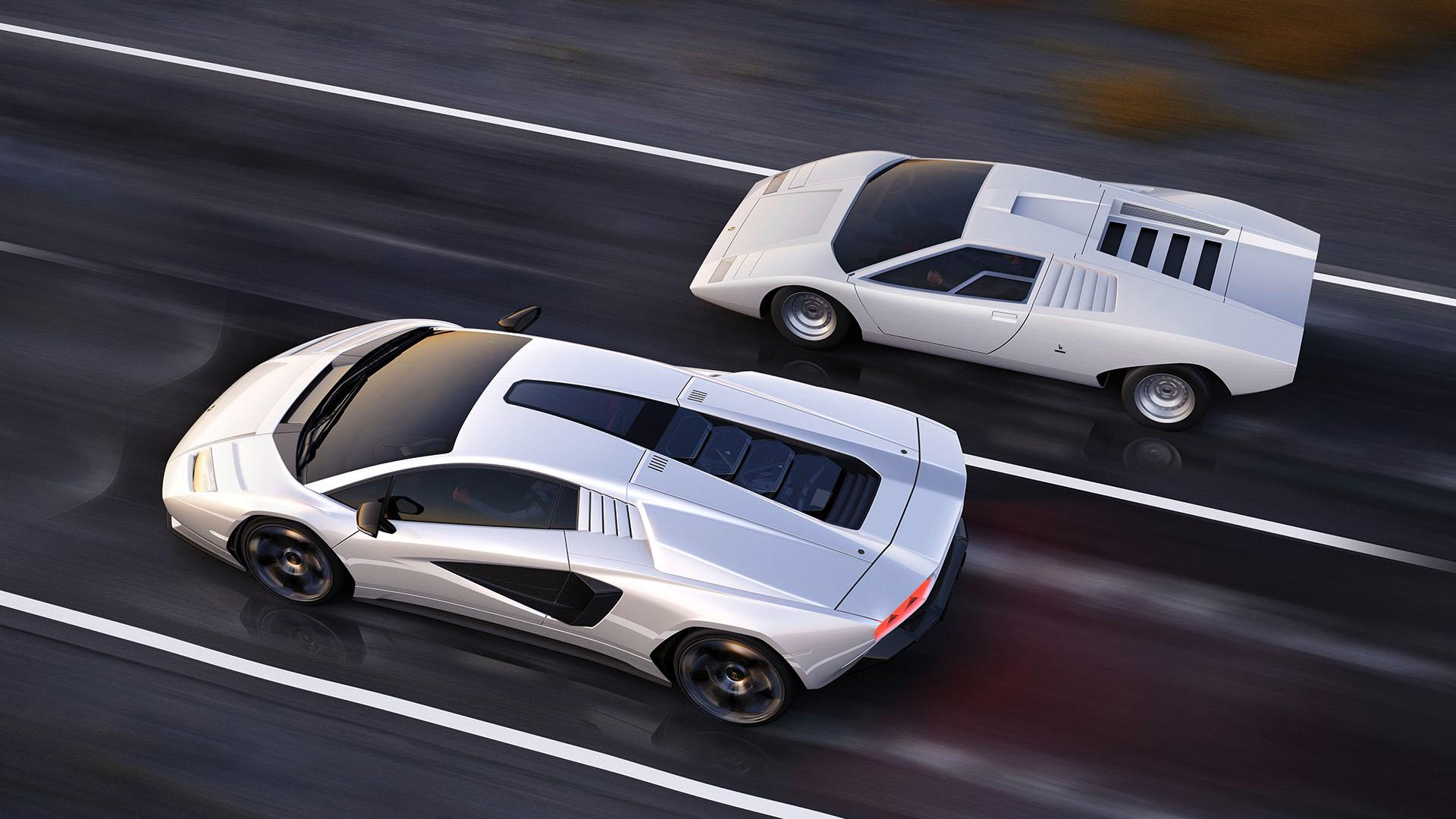
One more controversy was stirred up when people started complaining about the lack of a rear wing, while that large rear aerofoil is so typical on many classic Lamborghini Countach, ever since Walter Wolf insisted the factory installed it on his custom-built Countach Speciale models, but once again I bring up the point this is an homage to the ’71 prototype, which didn’t have a rear wing either, it would be 7 years later before that wing would be available, so why insist on having one on the 2021 homage edition? Do note that the Countach LPI 800-4 does come with an adjustable rear wing, it’s flush on all the press photos, but the specifications do state the car comes with a rear wing that can be raised in three different positions … so for all those asking about a rear wing, there is one, it’s just not as intrusive as the 1978 unit found on the Countach S evolution.
Looking inside …
While we are complaining about the new car … open the driver’s door … yes, it still opens upward, at least that trademark feature is still there, but then disappointment sets in. The interior is just so ‘Aventador’ it hurts, sure there are a few bespoke 3D-printer air vents and a large touchscreen for the infotainment, but that’s about it … on a $2,000,000+ limited edition homage! The seats show bespoke stitching, but they are still the normal Aventador S units, and the comfort seats too, it seems you can’t even opt for the carbon fiber lightweight sport seats we saw inside the Sián, which really is a pity.

Sadly that has been a trend on every few-off lately, the Veneno was introduced with very special seats, almost identical to the ones seen in the Aventador J, but the three customer cars came with normal Aventador comfort seats as it seemed those special seats weren’t street-legal … still, one owner convinced Lamborghini to sell him a pair of the special seats as seen in Geneva. But in the Centenario we got more of the same, the entire dashboard was more or less identical to a basic Aventador, the same with the Sián … carbon fiber seats and a bespoke central console, but the dashboard was taken straight from the Aventador with some different touches.
Just imagine Lamborghini would have made a bespoke dashboard for the 2021 Countach LPI 800-4, still with displays, but showing analog dials as seen in the 1971 car, the steering wheel would most likely be kept for security and certification, but wouldn’t it be possible for Lamborghini to recreate a modern version of those traditional Countach seats, some call a ‘Banana’, but I think that would have made such a difference in the overall perception of this 2021 homage.
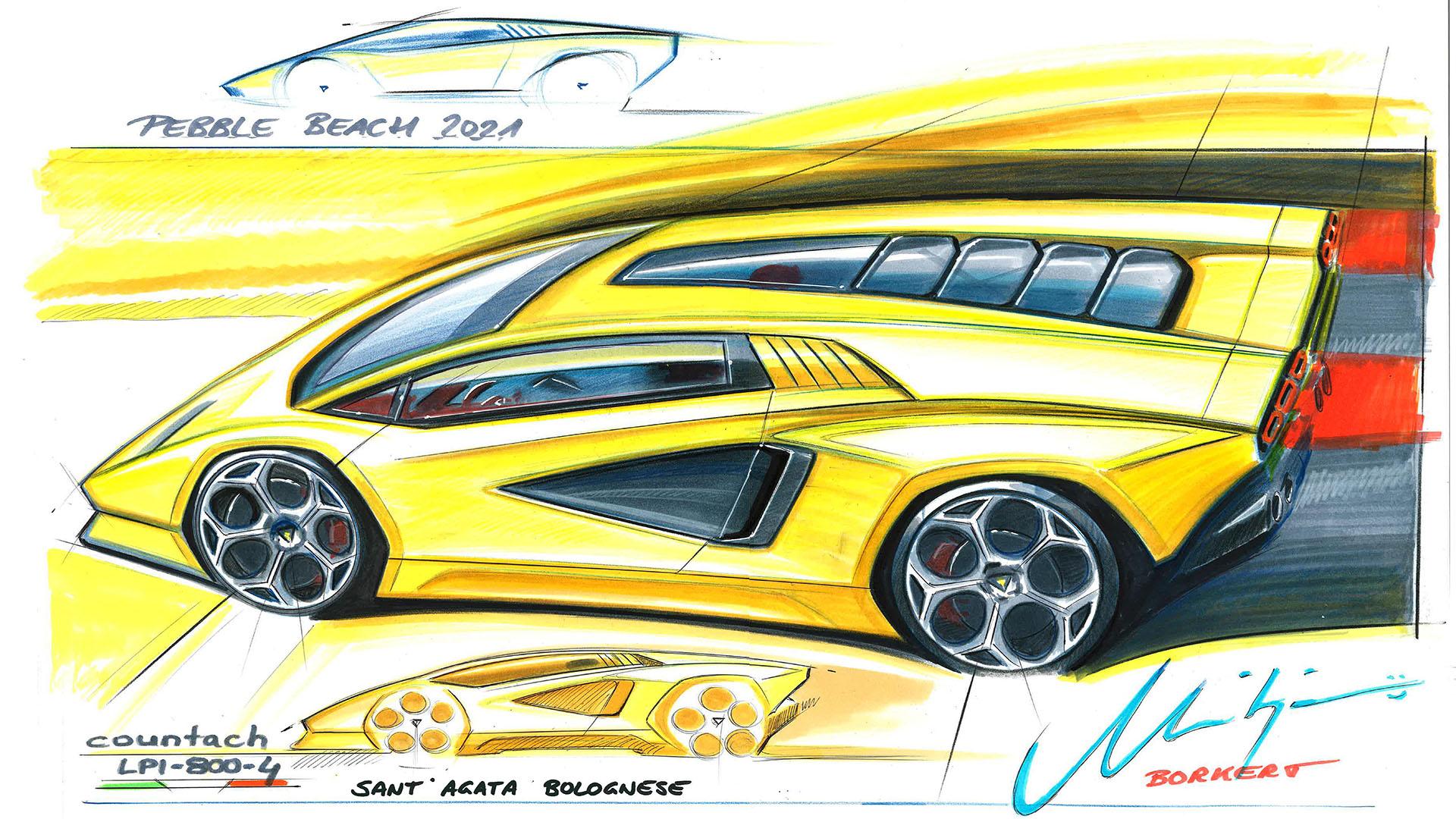
For me personally the biggest mistake Lamborghini made with the 2021 Countach was the shade, sure that Bianco Siderale looks amazing with the red leather interior, but the 1971 Countach prototype was finished in yellow with an all-black interior. The press release states they went for white to commemorate the white Countach S Ferruccio Lamborghini owned at one time, but that’s an S, and it had a dark, probably black, interior too, so why go for red? I would have finished the 2021 show car in a bespoke shade called Giallo Countach and fit a black leather interior to really celebrate the 50-year-old prototype, now that would be an homage in my eyes. And to make things worse, Mitja did his initial design drawings in yellow as seen above, so I think the idea was to release the 2021 Countach in yellow … so who made the decision white would be a better choice?
Conclusion
Bottom line is that the Countach changed the automotive world … this car became more than an icon or a work of art, a Lamborghini Countach is special, but on a whole different level, it might not be perfect, or necessarily beautiful … but it’s a Countach, and that says it all … Countach! And that is probably one of the main reasons for all the bad comments, the Countach has been made larger than life over the years, the car sits on a pedestal, and both owners and enthusiasts of the Countach are mainly old-school customers, they know the history of Lamborghini, they know what the Countach stood for in the Seventies and Eighties, and they are proud of their car.
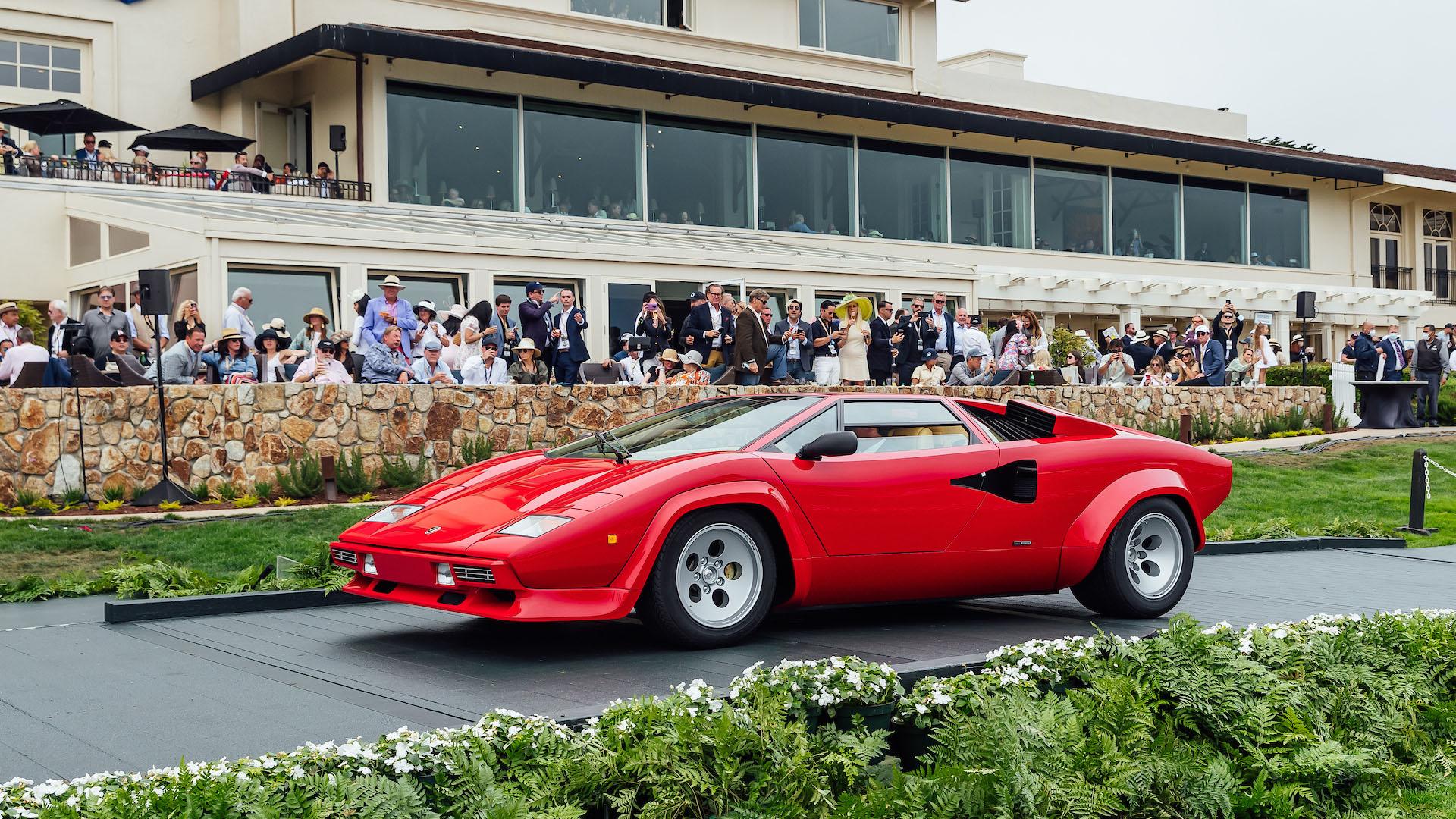
My fear is that only a handful of the 112 units of this new 2021 Countach LPI 800-4 will end up with passionate Lamborghini connaisseurs, but instead be bought as an investment to be shown in their garage, I don’t know if Lamborghini made this car available to first-time owners, but if they did, that would have been a mistake.

